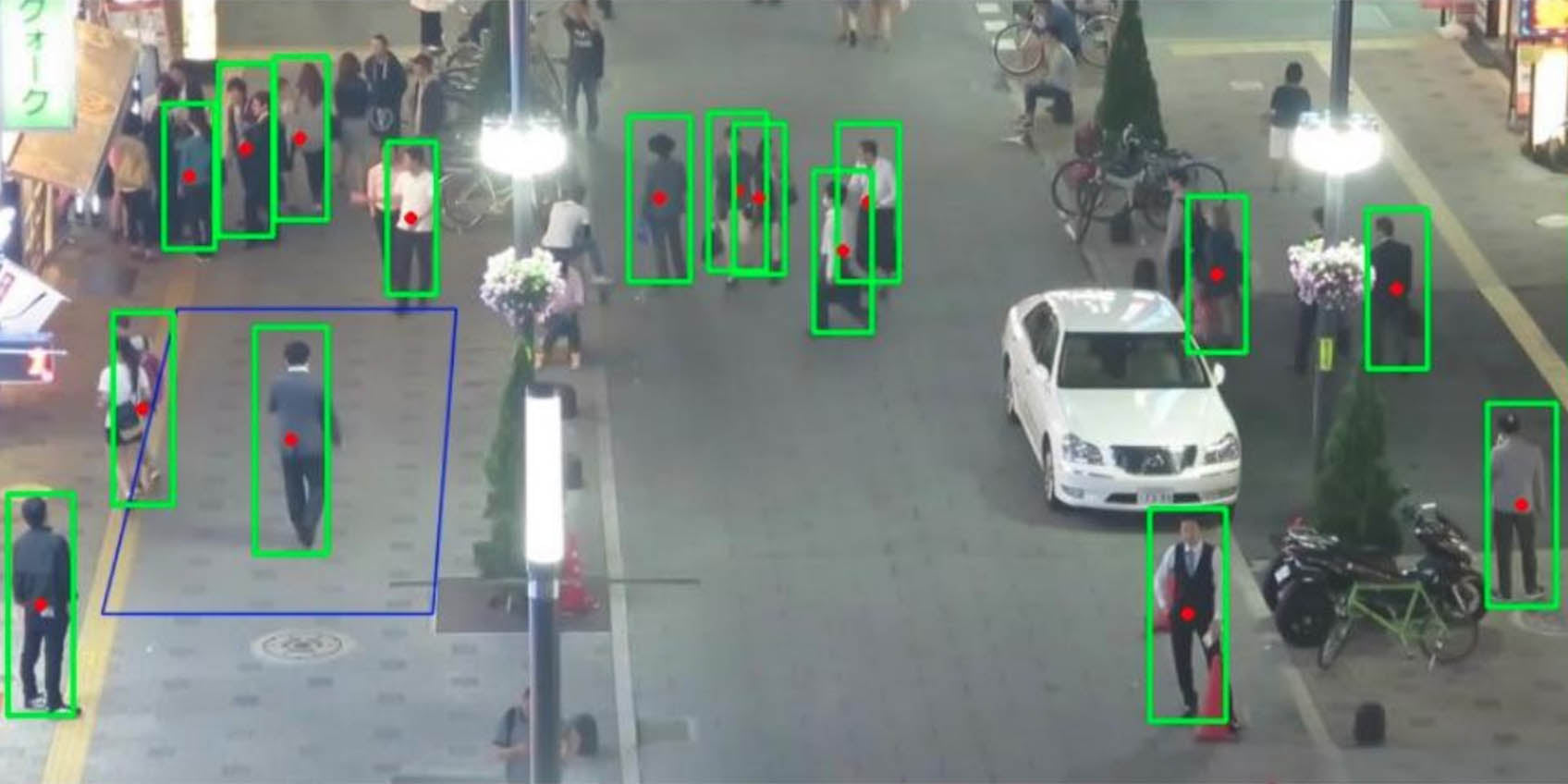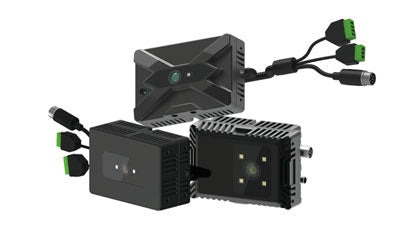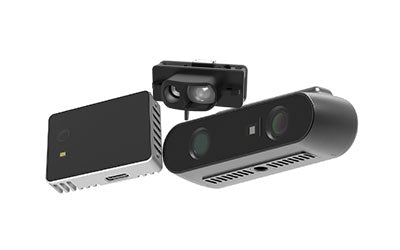Smart ToF People Counting System: Precise Flow Monitoring for Future

With the rapid development of smart cities and intelligent buildings, efficiently and accurately obtaining crowd data has become a core issue for many industries. People counting systems have evolved from basic infrared counting and simple visual recognition to AI-driven, 3D perception-based intelligent systems. Among them, Time-of-Flight (ToF) technology stands out as one of the most promising people counting solutions due to its high precision, robustness, and low latency.
What is a people counter called?
A People Counter is commonly referred to as a People Counting Device or People Counter in Chinese. Depending on the application context, it may also be called by various other names:
-
Flow Counter: Commonly used in public areas like malls and subways to monitor foot traffic density and direction.
-
Personnel Counting Device: A more technical term used in scenarios like security monitoring and smart buildings for system integration.
-
Entry and Exit People Counting System: Focuses on detecting the entry and exit directions, often used in access control and doorway monitoring.
-
Human Detection Counter: Highlights the ability to detect human bodies, suitable for sensitive environments like educational and healthcare settings.
-
Customer Flow Statistics Instrument/System: Specifically used in retail to analyze customer behavior and improve operational efficiency.
-
Smart People Monitoring System: Integrates AI algorithms, ToF, and other technologies to provide high precision, real-time analysis, and smart insights.
These terms, while similar in function, are used differently in various fields. For example, 'Customer Flow Statistics System' is more common in retail, while 'Personnel Counting Equipment' or 'Smart Flow Sensing System' is preferred in office buildings and business parks.
Introduction to ToF Technology: The Core of 3D Depth Sensing
ToF technology measures the time it takes for light to travel from the sensor to the target object and back, thereby calculating the distance of the object. ToF sensors emit invisible infrared light pulses and precisely record the time it takes for the light to return using high-frequency samplers. This process happens hundreds of thousands of times per second to create a real-time depth map. Unlike traditional 2D images, ToF provides complete 3D information that directly reflects the spatial relationship between people and their environment.
In people counting scenarios, the advantages of ToF sensors are particularly noticeable. They can accurately distinguish overlapping bodies, detect subtle movements, and are insensitive to lighting and background changes, making them more stable and reliable in real-world deployments.
How ToF Technology Powers People Counting Systems
Depth Perception Enables Accurate Multi-Target Recognition
Traditional visible light cameras rely on image feature extraction to recognize human bodies, but accuracy quickly deteriorates when multiple people pass through an entryway, or in the presence of light and shadow interference or overlapping individuals. ToF sensors, however, provide depth information for every pixel, which allows them to determine the position of targets. This enables accurate recognition of multiple people walking side by side or one behind another while effectively preventing false identification of non-human targets like shopping carts or umbrellas. This precision is essential in high-traffic areas like public entrances, shopping mall gates, and exhibition hall turnstiles.
Real-Time Processing and Edge Deployment for Millisecond-Level Feedback
Modern people counters often integrate edge computing modules, allowing them to process depth maps collected by ToF sensors locally. Embedded AI algorithms segment, track, and determine directions based on depth data, providing millisecond-level feedback without needing to transmit large datasets to the cloud. This not only reduces latency and bandwidth costs but also significantly improves system response times and stability.
Smart Algorithms to Filter Non-Human Targets
ToF combined with AI vision algorithms can accurately model the human body and identify typical body structures and movement patterns. This capability allows the system to effectively filter out non-human targets like bicycles, shopping carts, and pets, avoiding false counts. Additionally, AI can recognize specific actions such as group entry, rapid movement, or turning around, maintaining high-precision counting even in extremely crowded environments.
Multi-Zone and Multi-Point Deployment for Systematic People Flow Perception
ToF technology supports multiple counting zones within a single location, such as mall entrances, stairways, elevator halls, and corridors. Data synchronization, integration, and visualization can be managed through a unified platform. This multi-point deployment enables operators to comprehensively understand the distribution of people flow, optimize regional management, and schedule services accordingly. For example, in an airport, ToF counting systems can provide real-time statistics for different boarding areas, offering accurate boarding guidance for airlines.
Widespread Industry Applications
Smart Retail: Gain Insight into Customer Behavior for Precise Operations
In retail environments, ToF-based people counting sensors can monitor the number of people entering and exiting stores, their dwell times, and entry/exit directions. By combining this data with sales figures, retailers can analyze conversion rates and average transaction values. Furthermore, the flow hotspot analysis helps optimize shelf layouts and product displays, improving the customer experience and sales efficiency.
Transportation Hubs: Real-Time Passenger Flow Monitoring for Safe and Efficient Scheduling
In high-density areas like metro stations, train stations, and airports, ToF counting systems can be deployed at entrances, security checks, and waiting areas to monitor people flow in real time. When the crowd exceeds a set threshold, the system can automatically trigger alerts and engage security personnel for crowd management. Additionally, the system can be linked with digital screens to provide dynamic entry or transfer suggestions, optimizing passenger distribution and reducing congestion risks.
Smart Buildings and Parks: Energy Savings and Optimized Workforce Management
In modern office buildings and smart parks, ToF counters can be embedded in ceilings or doorframes to monitor real-time people flow in meeting rooms, hallways, and elevator areas. When no one is detected in an area, the system can automatically turn off lights and air conditioning, optimizing energy usage. Property managers can also adjust cleaning and security service frequencies based on people counting data, improving operational efficiency.
Healthcare and Education: Ensuring Safety and Rational Resource Allocation
In hospitals, classrooms, and laboratories, real-time people counting helps prevent overcrowding and ensures safety. It also aids emergency response by providing an accurate count of people present. Additionally, schools can use the system to track attendance and classroom usage, helping administrators better allocate teaching resources.
Future Trends: ToF Technology Advancing People Flow Management Toward Intelligence
With ongoing breakthroughs in 5G, edge computing, and artificial intelligence, ToF-based people counting systems are advancing towards a more intelligent, networked, and refined future. Given its real-time depth perception and precise spatial localization, ToF will play an increasingly pivotal role in people flow management. The following trends highlight the future potential:
Multimodal Fusion: Building a More Powerful Human Detection System
Single-sensor systems can be limited in complex environments. However, by combining ToF depth data with other sensors like millimeter-wave radar, thermal imaging, and RGB cameras, a multimodal sensing system can be created. For instance, in environments with smoke, strong backlighting, or nighttime conditions, thermal imaging and millimeter-wave radar can complement ToF's limitations, improving recognition accuracy. AI algorithms can fuse data from different modalities, ensuring more stable and precise human detection. This trend not only enhances system robustness but also expands its applicability.
Behavioral Recognition Upgrade: Evolving from 'Counting' to 'Understanding Behavior'
In the future, ToF-based people counting systems will evolve from simple counting to behavior recognition and dynamic analysis. By continuously tracking human body contours and movement paths, the system can identify behaviors such as lingering, wandering, crowding, running, and abnormal movement. In retail, this feature can be used to analyze customers' movements inside the store. In security applications, it can identify potential risks in real time, improving public safety.
Data Platformization and Cloud-Edge Collaboration: Enabling Large-Scale Deployment and Smart Decision Support
ToF counting systems can already achieve real-time recognition and response through edge computing. In the future, these systems will integrate with cloud platforms, enabling centralized management of people flow data across multiple devices and locations. The system can monitor people flow trends across various entrances, floors, and areas, providing unified analysis and integrating with other business systems like energy management, security control, and customer flow prediction. This 'cloud-edge collaboration' platformization will make people flow data an essential decision-making tool for city-level or enterprise-level smart operations.
Low Power Consumption, Miniaturization, and Easy Deployment: Advancing Towards 'Invisible Perception'
With advances in semiconductor manufacturing and integrated circuit technology, ToF sensors are becoming smaller, more energy-efficient, and easier to deploy. Future ToF devices will be embedded in smaller terminals like doorframes, lighting fixtures, and ventilation openings for 'invisible deployment,' which does not affect building aesthetics while continuing to work undisturbed. The miniaturization trend will also drive the adoption of ToF technology in consumer applications like home automation, automotive, and wearables, opening up new possibilities for smart living.
Conclusion: ToF People Counting Systems - The New Tool for Precise Management
As intelligent management becomes a growing trend, ToF-based people counters and people counting systems are key tools driving digital management in various locations. With their powerful 3D perception capabilities and intelligent algorithms, ToF-based systems provide highly accurate, real-time, and flexible solutions for counting people. If you're looking for an efficient, stable, and future-proof people counting system, ToF technology is undoubtedly a reliable choice.
Synexens 3D Of RGBD ToF Depth Sensor_CS30
Our professional technical team specializing in 3D camera ranging is ready to assist you at any time. Whether you encounter any issues with your TOF camera after purchase or need clarification on TOF technology, feel free to contact us anytime. We are committed to providing high-quality technical after-sales service and user experience, ensuring your peace of mind in both shopping and using our products.






